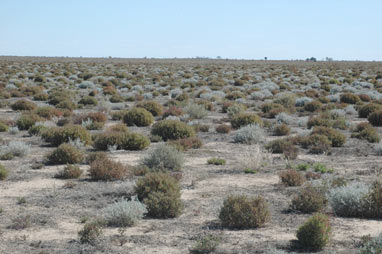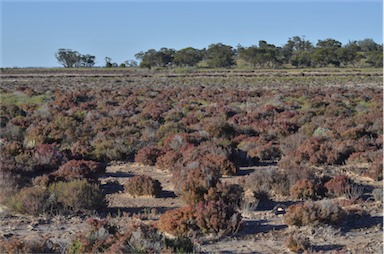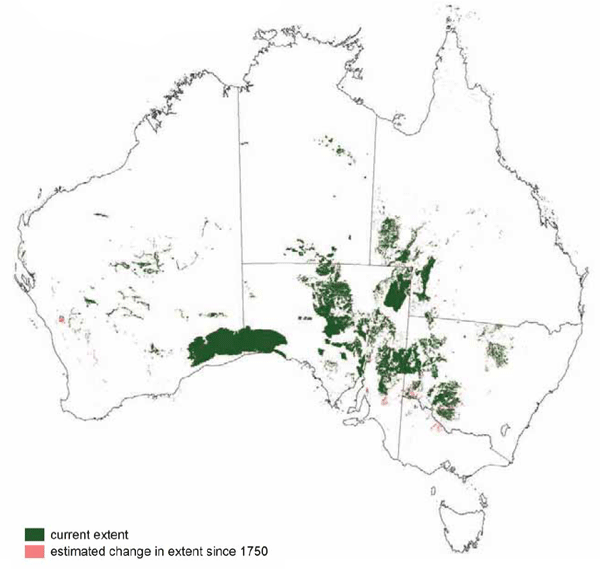 Chenopod shrublands near Hay, NSW |
 Samphire shrubland, Murray Sunset National Park, Vic |
Foliage cover of tallest stratum 10 - 30% |
Chenopod shrublands and Samphire shrublands
- Overstorey is dominated by a range of hardy low shrub species.
- Widespread in the near-estuarine, arid and semi-arid areas and occur generally as extensive flats.
- Site conditions tend to affect the type of shrub species that occur within these communities.
- In damp and water logged areas (e.g. on drainage areas and fringing salt lake areas) samphires dominate the overstorey.
- Plants in samphire communities include the Chenopodiaceae genera Halosarcia, Salicornia, Sclerostegia and Sarcocornia.
- Species in chenopod communities are drought and salt tolerant and include the Sclerolaena, Atriplex (salt bush), Maireana (blue bushes, cotton bush), Chenopodium and Rhagodia genera
Generally these communities have remained intact since European settlement. In some cases the communities have increased in extent because of increased salinity and waterlogging. Foremost among threats for coastal occurrences are infilling for urban areas, changes to tidal regimes and isolation from the estuary by roads and infrastructure.
![]() Photos from the Australian Plant Image Index
Photos from the Australian Plant Image Index

Sources: Australia's Native Vegetation - from rainforest to spinifex, map and information poster produced by the National Land & Water Audit, Natural Heritage Trust, Australian Government, 2001
Map: Australia's Native Vegetation - A summary of Australia's Major Vegetation Groups, 2007, Australian Government website
https://www.environment.gov.au/system/files/resources/a9897cf2-9d38-4201-bea2-13dadf3af9a8/files/major-veg-summary.pdf
Structure diagram: Atlas of Australian Resources - Vol. 6, Vegetation,
AUSLIG, Canberra, 1990
![An Australian Government Initiative [logo]](/images/austgovt_brown_90px.gif)



